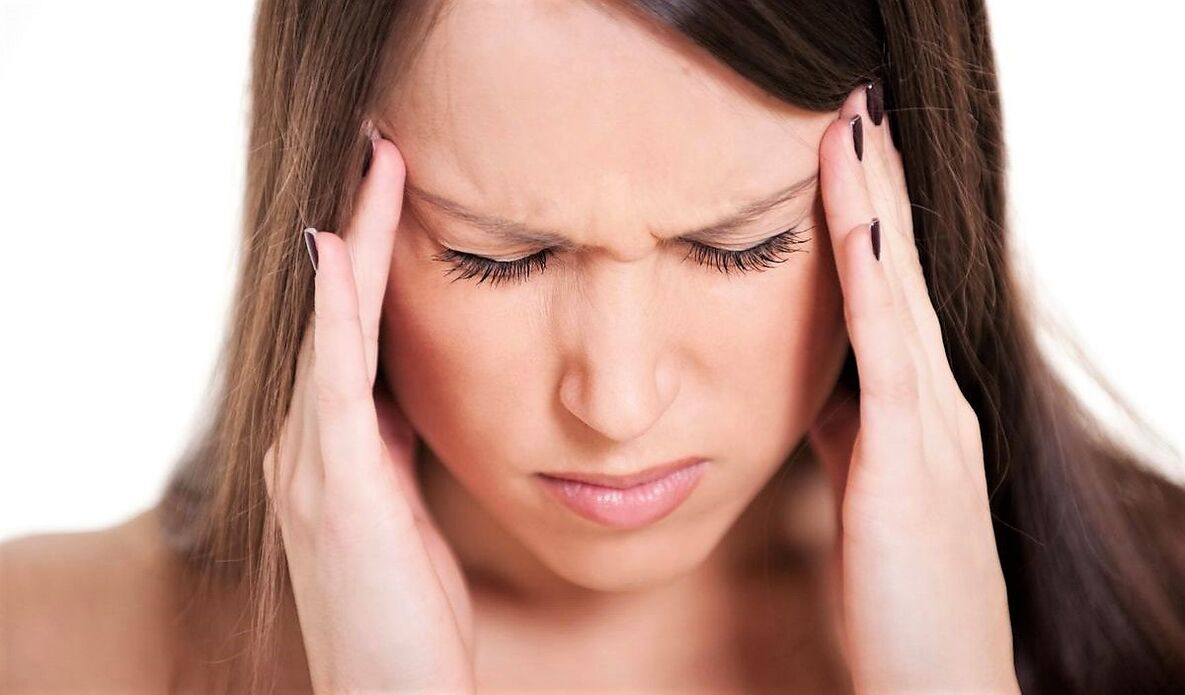
The first signs of cervical osteochondrosis usually appear at a young age. Well, tell me, who hasn't had neck pain at least once in their life? And instead of paying attention to the symptom, we found logical explanations: maybe it was blown, I didn't sleep on my pillow, I was in front of the computer and lots of other people all day. And now that we know what's affecting the vertebrae, there's no need to show it to a doctor -- it'll pass by itself, after all. Most often, people after the age of forty will seek help from a doctor for cervical osteochondrosis, then because of the presence of accompanying pathology.
listen to your body
The first sign of cervical osteochondrosis is pain in this part of the spine. As a vertebra moves along an axis relative to another vertebra, it can be characterized by persistent pain and sharp shots when turning the head.
The degenerative process of vertebral osteochondropathy progresses if an emerging syndrome of vertebral osteochondropathy is chronically ignored by a person.
Symptoms such as restricted mobility of the vertebrae in the affected part occur - this protects the body from unpleasant sensations. Then the unpleasant symptoms subsided and the person thought he got rid of the problem, which was actually an aggravation of osteochondrosis.
As before, there is no way to turn the head completely from side to side, which doesn't even bother many people. At the same time, the pathology can enter the stage of irreversible changes in the tissues that make up the vertebrae. Symptoms return with each deterioration of osteochondrosis. As a result, a spinal hernia forms, which puts pressure on the nerve roots and blood vessels that pass through each vertebra. As a result, there are such signs of high blood pressure: dizziness, headache, "fly" flashing before the eyes.

Signs of cervical osteochondrosis do not have any of the features of this pathology. Therefore, as osteochondrosis of the vertebrae worsens, it is sometimes difficult to guess the cause of discomfort. There can be severe headaches in the occipital region that sometimes turn into migraine headaches, and blood pressure rises to considerable numbers. Symptoms are more pronounced when coughing, turning head and sneezing. Low back pain may also occur in the arms or chest as osteochondrosis of the spine worsens. If vertebral osteochondrosis is running and there are significant changes in the vertebral tissue, insufficiency of spinal or cerebral circulation may occur.
If the lower part of the neck area is affected, symptoms similar to heart problems may occur. Is it possible to independently determine if it is the heart? Chest pain characterized by osteochondrosis increases as the body rotates and does not go away after taking nitroglycerin. Throat discomfort can sometimes be caused by spondylochondrosis, but it is extremely rare that a throat problem occurs. It is worth noting that throat discomfort may be due to a problem with the thyroid gland. Sometimes throat discomfort can be accompanied by emotional and neurological shocks. Of course, the most common cause of sore throat and sore throat is inflammation (ARVI, tonsillitis, pharyngitis, etc. ).
Will you be very scared?
Often, elevated blood pressure, vegetative vascular dystonia (VVD), and spinal and cervical osteochondrosis are best friends.
As a result of compression of the spinal vessels, blood pressure rises, manifesting as headaches, visual disturbances, and coordination. The extreme symptoms of this spinal pathology lead to panic attacks - an excruciating feeling of fear, anxiety, depression.
How do you know if you have an attack? Panic attacks usually occur suddenly and are accompanied by the following symptoms:
- palm of the heart;
- Elevated blood pressure indicators;
- sweating, chills, body shaking;
- dizziness and headache;
- feeling of lack of air;
- Fear of attack.
Other symptoms of a panic attack include:
- abdominal pain and discomfort;
- liquid stool;
- frequent urination;
- may have a sore throat
- trembling of limbs;
- Impaired motor coordination.

Panic attacks usually last no more than half an hour. If the patient feels the symptoms of all these episodes first, then there is a fear of death, of any incurable disease. Extensive examination of the pathology of organs and systems did not reveal anything, except for the pathology of the vertebrae, which they probably did not pay special attention to, so the man began to think that his case was serious and unique. However, this condition should be treated appropriately. Patients should understand that nothing is life-threatening.
What should I do
If you experience cervical discomfort, panic attacks, elevated blood pressure, if symptoms are already disturbing and do not go away for a long time, talk to your doctor! Maybe you have cervical osteochondrosis. Especially if the pain in the affected spine is severe, it will be difficult to ignore it. The symptoms themselves do not go away, and many patients tend to think that "everything will go away on its own", when in reality everything is just progressing. Temporary relief is another exacerbation that turns into a sign of spinal osteochondrosis. It's easier to spot and overcome problems early on than to deal with complications!




























